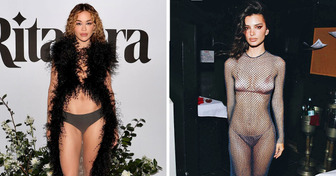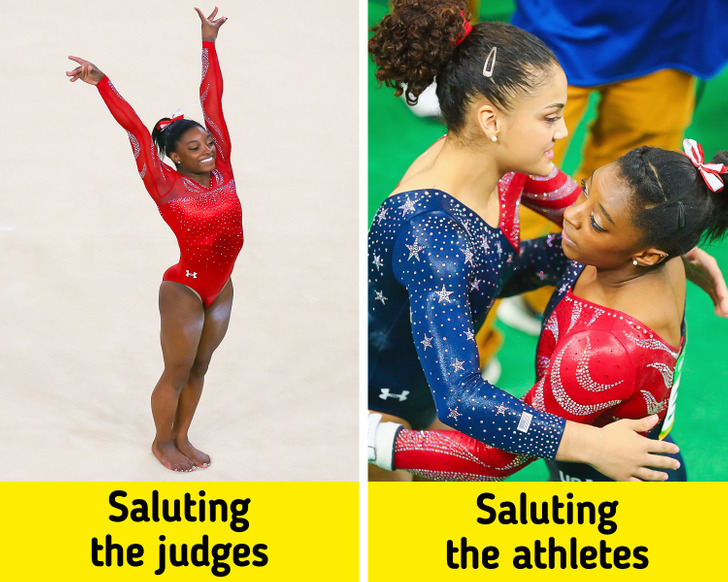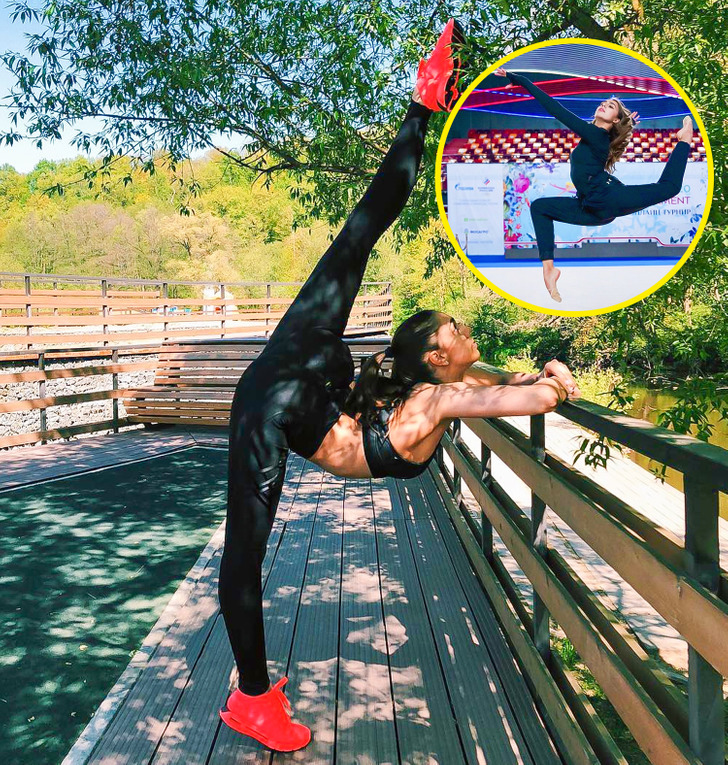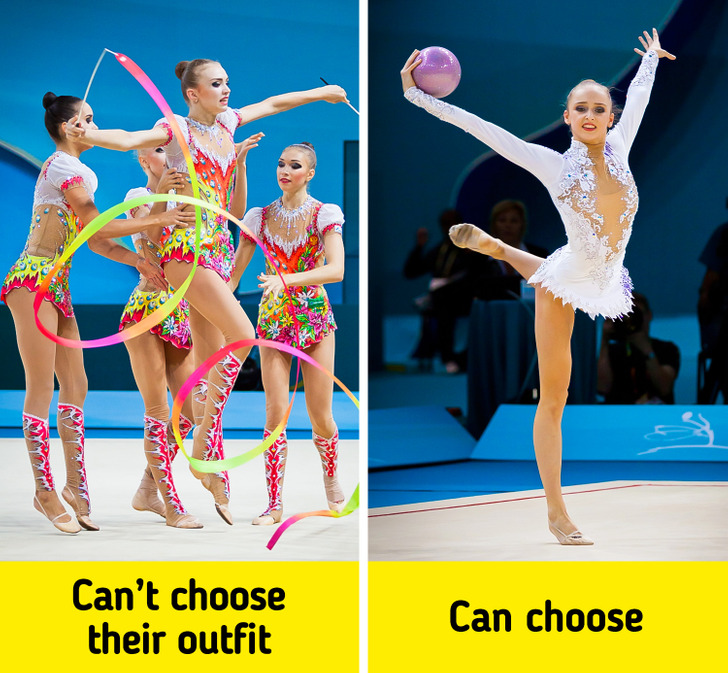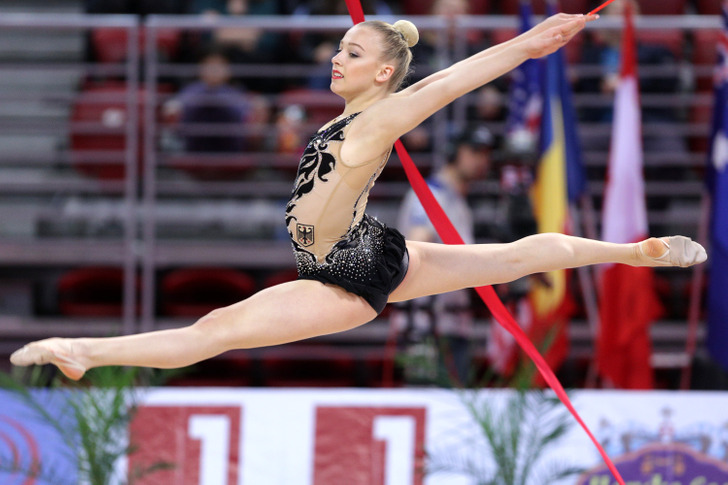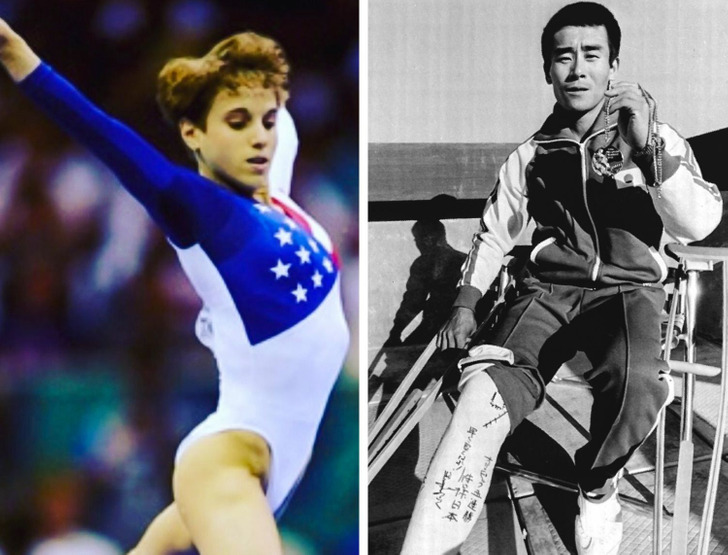First, none of these are secrets. Second, artistic and rhythmic gymnastics are very different from each other. And the leotards are different (you are comparing an old artistic leotard to a current rhythmic leotard). Size can be advantageous in artistic gymnastics and being taller in rhythmic gymnastics is common so you can't compare the gymnast heights between the two. Clearly the person writing this has very little knowledge of these sports.
10 Gymnastics Secrets That Are Finally Coming to Light
The human body is capable of doing incredible things. Proof of this is in some sports that push it to the limit, and gymnastics is one of them. It is common knowledge that it requires not only talent but also a lot of effort and physical conditioning. But aside from that, the industry has a lot of secrets you’d never even imagine.
1. Being short may give you some advantages, but not many.
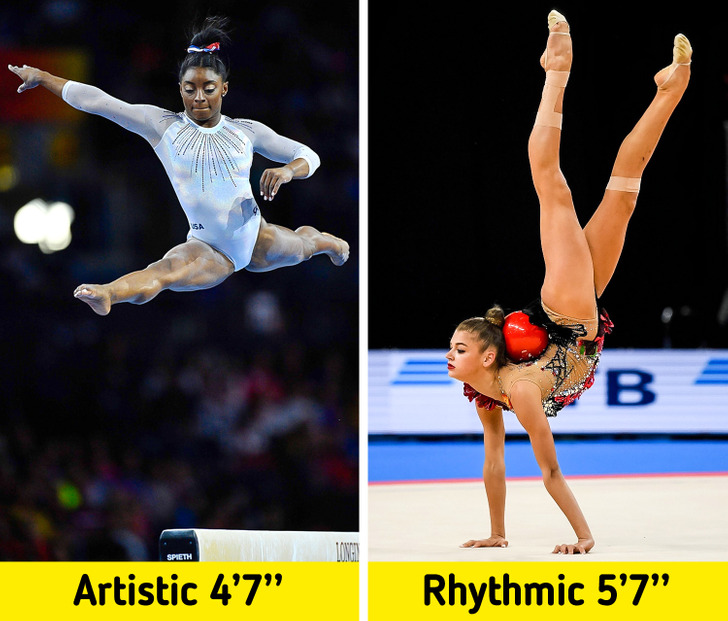
Gymnast’s height has been a topic of discussion for a while. Short women often reach professional competition levels. People believe that feature allowed them to have a more remarkable ability to perform movements involving full-body rotations by achieving a good strength-to-weight ratio. But the truth is that winning depends on things other than just the athlete’s size.
In addition, it is possible that the nature of the sport attracts short people (as basketball attracts tall people), which explains why they tend to be small. In any case, it’s also true that height varies depending on the type of gymnastics. For example, rhythmic gymnast Aleksandra Soldatova is 5ft. 7 meters tall, while artistic gymnastic athlete Simone Biles is 4ft. 7.
2. There are protocols to follow before and after each routine.
While the basis of the sport is athletic performance, judges also evaluate if athletes can follow protocols during the competition. For example, while performing a routine, they should not touch or give instructions to the athlete, or the team could lose points.
On the other hand, the evaluation of a routine begins once the gymnast salutes the judges by raising both arms and ends when she makes the same movement again. In addition, gymnasts, judges, and coaches can’t use electronic devices like cell phones.
3. Gymnasts adapt their outfits to the zeitgeist and pay more attention to detail today.
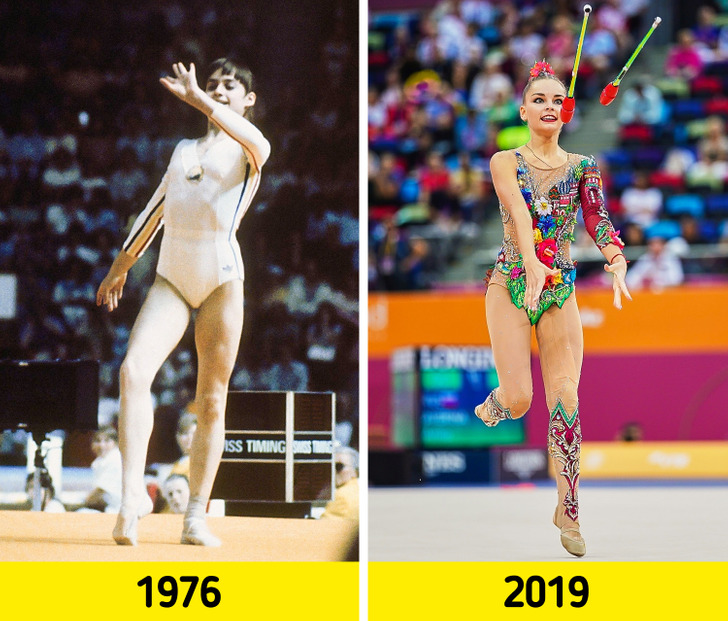
Like in other sports, such as figure skating, the gymnasts’ routines are also meant to highlight their outfits. However, this has not always been the case. In the past, modesty was the norm, and most athletes would wear simple outfits.
Modern outfits have a special cut to create the illusion that athletes have longer legs. Brighter materials tend to emphasize the athlete’s muscles. As you can see, every detail counts: body type, skin tone, and even the color of the mats will determine what outfit to wear.
4. The wrong hairstyle can cost them points.
Another rule that few athletes would dare break is wearing a hairstyle other than a tight braid, buns, or ponytails. Hair should be pulled back from the face so that it does not obstruct the view and be considered unsafe. In that sense, a pair of earrings is also considered a hazard; flashy jewelry is also not allowed.
5. Even if they retire professionally, most maintain lifelong training routines.
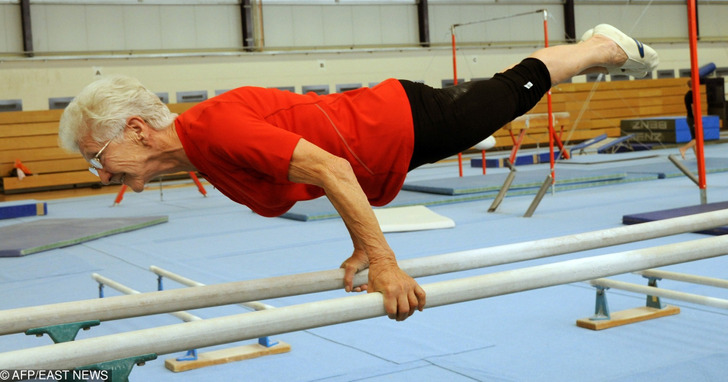
Gymnasts’ bodies become accustomed to the stress of training —they start the sport before age 5 and train around 40 hours a week. That may be why some of them need it to remain stable throughout their lives, albeit at a lower intensity, so many former gymnasts maintain some sort of routine after retiring.
Still, training injuries can crop up decades later. So far, the oldest gymnast to compete in the Olympic Games is Oksana Chusovitina, and because of her age (47), she defies the average. Her performance could be related to her genes, as some athletes, like her, recover quickly from bodily stress.
6. Calluses can be helpful.
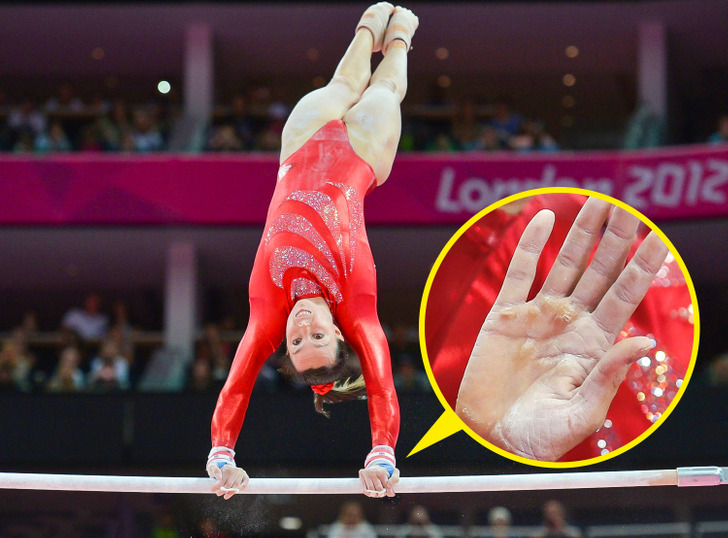
Calluses are not always harmful. In some disciplines, such as gymnastics, calluses can even be helpful, as they alert to some extent to something in the routine that athletes are not doing quite right and need to change.
7. They practice visualization of routines as a form of training.
Olympic gymnast Margarita Mamun once advised a group of younger athletes to try to visualize their routines for 1 minute and 30 seconds before going to sleep. Visualization in gymnasts is a frequent psychological practice during training, competitions (to reduce anxiety), and even during rehabilitation.
8. Gymnasts cannot always choose the costume they will wear.
Coaches generally choose outfits when competing as a team, and gymnasts often don’t have a say in the matter. However, some teams are more flexible and make use of the gymnasts’ talent to choose something that makes them feel comfortable.
On the other hand, although when competing with a full squad in the qualifying phase, all athletes from the same team must wear the same outfit, gymnasts can choose any costume within a range of options for the final.
9. They can use glue to keep the leotards in place.
Undergarments should be kept from showing to avoid losing points in competitions. Teams have found different solutions for this problem. Some prefer not to wear underwear, while others spray a special type of glue over their body to keep the suit in place.
10. Some are willing to cope with great pain to reach victory.
It has happened in the history of gymnastics that the score of first and second place was so close that athletes had to endure a certain amount of pain to win. For example, Kerri Strug (pictured left) at the 1996 Atlanta Olympics. After a botched landing in which her ankle gave way, she was meant to sit out the next rounds but ended up performing a second jump that led her team to win the gold medal that year.
Olympic athlete Fujimoto (pictured right) also went down in history after breaking his knee (and hiding the injury) on the floor routine in a 1976 competition so as not to alert his rivals. When asked about this, he said, “Even though I was injured, I had to do it, for me, for the team.” His courageous performance helped Japan win gold.
What other information do you know about this discipline? What sports do you practice or would you like to practice?
Comments
Related Reads
16 Mysterious Objects That Puzzled People, but Answers Were Found on the Internet

13 Movie Mistakes That Producers Tried to Hide Under the Rug
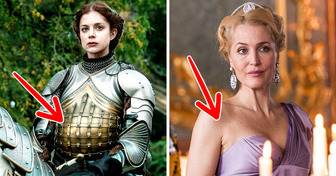
10+ Things That Were Unacceptable in the Past, but Are Pretty Normal Now

The Remarkable Story of a Duchess Who Defied Royal Standards and Became a True Legend
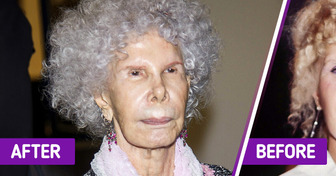
15 People Who Opted for Plastic Surgery and Hit the Jackpot

15+ Famous Men Who Are Becoming Even More Appealing With Time

A Plus-Size Model Boldly Shuts Down Critics Who Advised Her to Stop Showing Off Her Body

15 People Who Uncovered Such Jaw-Dropping Family Secrets That They Left Us Speechless

16 People Who Went to the Salon and Carried Home Nothing But Disappointment

“She’s a 12-year-old Child,” Beyoncé’s Daughter’s Dress at the Grammys Stirs Heated Online Controversy

Meghan Markle Subtly Alters Her Appearance, but Many Overlook the Detail She Modified

New Fashion Trend: Celebrities Wearing Lingerie in Public
